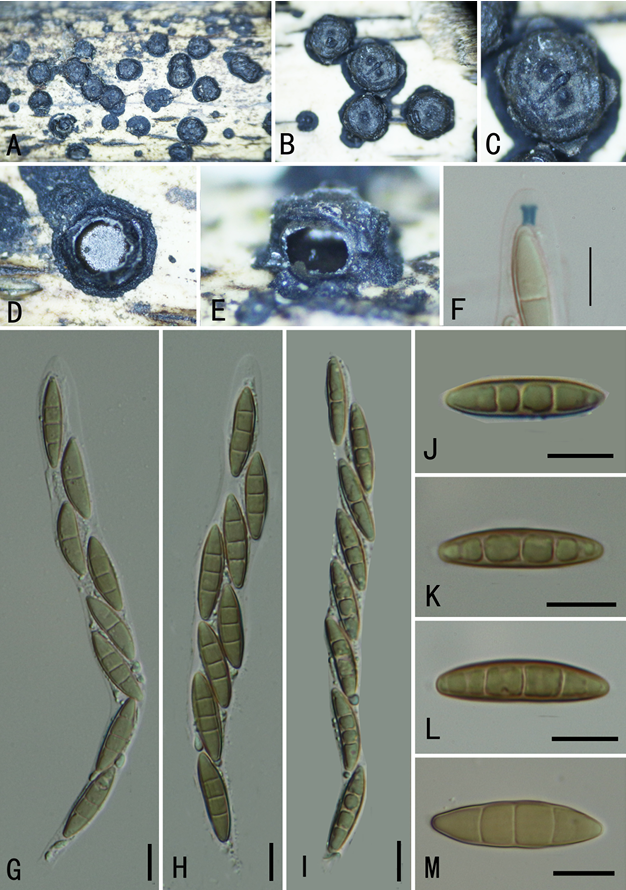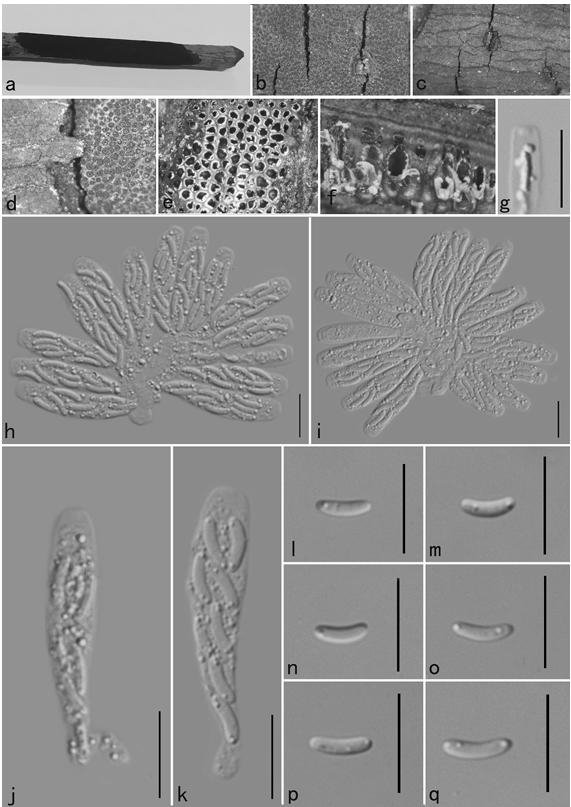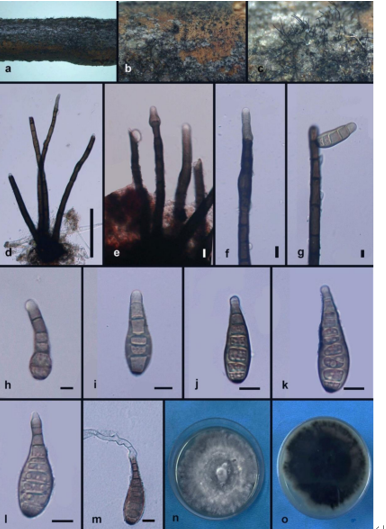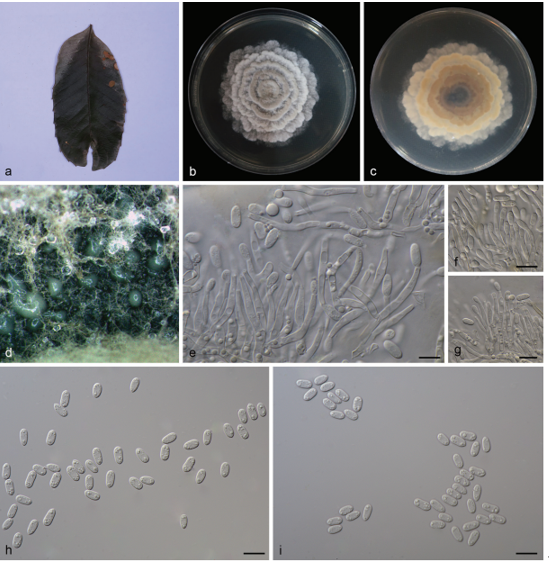Tomentella capitatocystidiata H.S. Yuan, X. Lu & Y.C. Dai 2020
Index Fungorum number: IF555724; Facesoffungi number: FoF 05608
Holotype: CHINA, Jilin Province, Changbaishan Nature Reserve, on fallen angiosperm branch, 10 August 2016, Yuan 11459 (IFP 019255, holotype), Yuan 11494 (IFP 019256).
Morphological description
Basidiocarps annual, resupinate, separable from the substrate, arachnoid, without odour or taste when fresh, 0.8–1.2 mm thick, continuous. Hymenophoral surface smooth, dark blonde to yellowish brown (5D4–5E8) and turning lighter than the subiculum when dry. Sterile margin often indeterminate, byssoid, ligher than hymenophore, dark blonde (5D4). Rhizomorphs present in subiculum and margins, 5–30 μm diam; rhizomorphic surface more or less smooth; hyphae in rhizomorphs monomitic, undifferentiated, of type B, compactly arranged and of uniform; single hyphae with both clamps and simple septa, thick-walled, unbranched, 2–4 μm diam, pale yellow in KOH, cyanophilous, inamyloid. Subicular hyphae monomitic; generative hyphae clamped and rarely simple septate, thick-walled, occasionally branched, 3–6 μm diam, without encrustation, pale brown in KOH, cyanophilous, inamyloid. Subhymenial hyphae clamped and rarely simple septate, thin-walled, occasionally branched, 5–8 μm diam; hyphal cells short and inflated, pale brown in KOH, acyanophilous, inamyloid. Cystidia present, capitate, arising from subhymenial hyphae, 55–100 μm long, 3–5 μm diam at base and 12–16 μm diam at apex, projecting outside of the hymenium, clavate, without simple septa and encrustation, pale yellow in KOH. Basidia 15–40 μm long and 5–10 μm diam at apex, 3–5.5 μm at base, with a clamp connection at base, clavate, not stalked, sinuous, without transverse septa, pale yellow in KOH and in distilled water, 4-sterigmate; sterigmata 3–3.5 μm long and 1.5–2 μm diam at base. Basidiospores slightly thick-walled, (6.5–)7– 7.5(–8) × (6–)6.5–7(–7.5) μm, L = 7.38 μm, W = 6.56 μm, Q = 1.09–1.19 (n = 60/2), subglobose to bi-, tri- or quadralobed in frontal and lateral views, echinulate, pale yellow in KOH and distilled water, cyanophilous, inamyloid; echinuli usually isolated, sometimes grouped in 2 or more, up to 1.5 μm long.
Habitat: On fallen angiosperm branch
Distribution: In China.
GenBank Accession: ITS: MK211700, MK211701; LSU: MK446344, MK446345.
Notes: Tomentella pilosa (Burt) Bourdot & Galzin and T. capitatocystidiata formed a clade in our phylogeny (Fig. 111) and both species share these characteristics: arachnoid basidiocarps separable from the substrate with a byssoid sterile margin, the presence of capitate cystidia and rhizomorphs. However, T. pilosa differs from T. capitatocystidiata by having utriform basidia, rhizomorphs with a dimitic hyphal system and subglobose to bi-, tri-lobed basidiospores (Wakefield 1960; Kõljalg 1996). T. capitata Yorou & Agerer and T. capitatocystidiata also share arachnoid basidiocarps separable from the substrate, a smooth hymenophoral surface, a byssoid sterile margin, clamped and simple septate hyphae, clavate basidia and the presence of rhizomorphs and capitate cystidia. But, the former species is diferentiated by brown to dark brown basidiocarps, more or less uniform subhymenial hyphal cells and subglobose to bi-, tri-lobed basidiospores (Yorou et al. 2007).
Reference: Hai‑Sheng Yuan1,2· Xu Lu1,2 · Yu‑Cheng Dai3 ·

A basidiocarp of Tomentella capitatocystidiata (IFP 019255, holotype)









